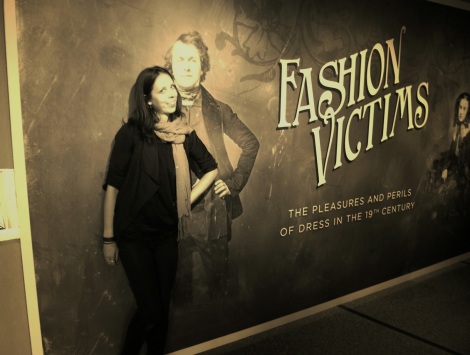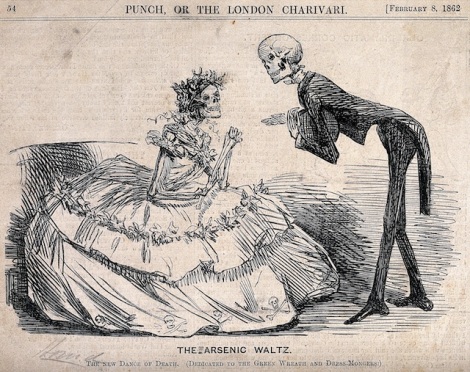Dr. Alison Matthew David’s lecture “The Pleasures Perils of Dress in the 19th century” was engaging and encompassing on all levels. While she assured the audience that there was still unveiled stories of 19th century fashion victims, I was almost positive that she unraveled every thread of fashion trauma during this century. I loved how Dr. David stated the intent of her research, which she packaged in the single question of: “How can the past make you think differently about how clothes are made and worn?”
This question of the past could cast a new light on our current state of fashion was answered by showing that the poison tainting the fashion industry today is very similar, if not worst, than the perils of 19th century fashion. I found the manner in which she discussed her material cultural analysis inviting. Dr. David infused 19th century garments with life by saying and showing that they “still bare the traces of trauma that they inflicted on their makers and wearers.” Her approach of narrating a “sensuous history,” in other words, “history told through the senses” made the lecture entertaining and the subject matter at hand more germane to today’s issues. I found her methodology to be extremely solid; she not only looked at the objects themselves, but also at myths, works of literature, medical manuals and books, newspapers, and magazines. I applaud Dr. Davis for venturing into the realm of science to test for mercury in the garments.
What I found most important to her contribution to the field of fashion studies was that she deconstructed the sexist stereotype of fashion victims as only wealthy females. I was a little concerned before the lecture when reading about “Madame Death” and presumed that Dr. Davis would also gender fashion victims as female. Dr. Davis showed that the wounds of fashion covered men, children, and workers. I was glad that Dr. Davis was attentive the extent of harm that dress inflicted on its producers. Overall, I found that Dr. Davis’s dip into the past allowed me to step outside of the fashion industry I am entrenched in and see it through the lens of the past.


Thank you for the insightful post! I’m so appreciative that you highlighted that the “stereotypical fashion victim” and fashion instigator has historically been portrayed through the medium of upper class women. By showcasing that the victims of fashion production and consumption affected the gamut of individuals from a spectrum of class levels; sheds light on important historical elements consisting of destructive fashion methods relative to today’s practices. In your statement illustrating how Davis’s “dip into the past allowed you to step outside of the fashion industry”, truly resonated with me in regards to how enveloped our society has become within modern day consumption and manufacturing practices. As you noted, Davis’s historical lens helped shape critical pathways leading to our current processes and her research raises critical questions within our ever-evolving sustainability discussion. I agree with you about your sentiment that our methods today might actually be worse than the “perils of 19th century fashion”. Indeed, modern day chemicals are more corrosive and unlike the problem being situated within the same demesnes of wealthy aristocrats such as London or Paris; today’s perilous fashion occupations are far from first world eyes.